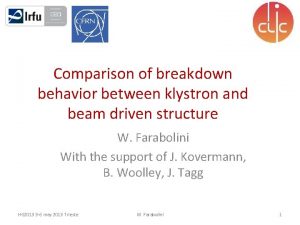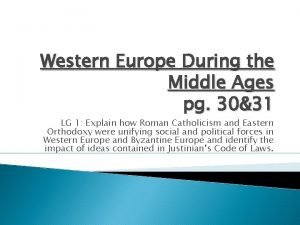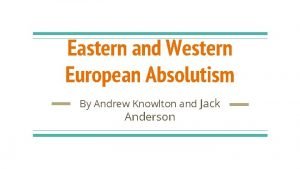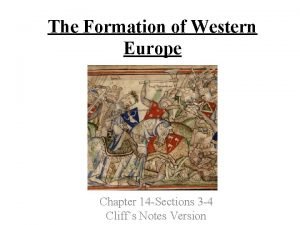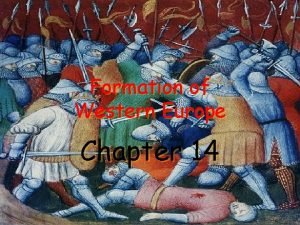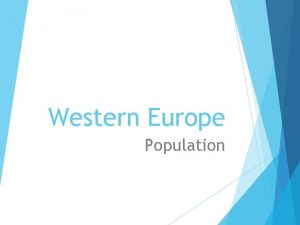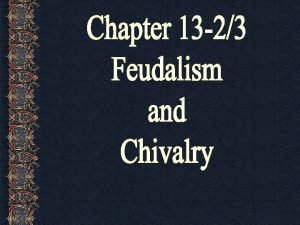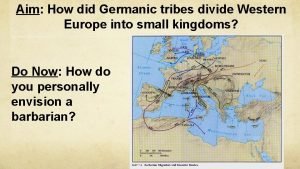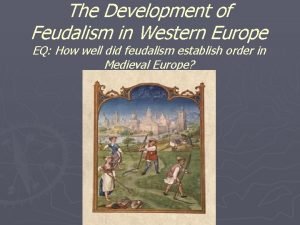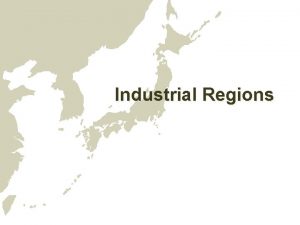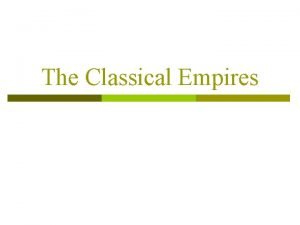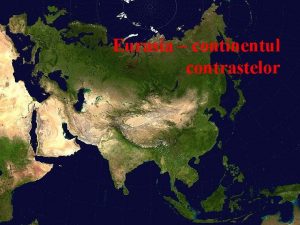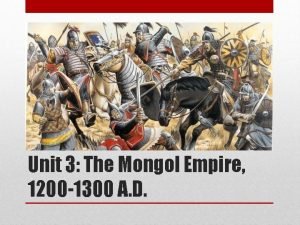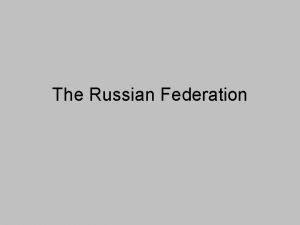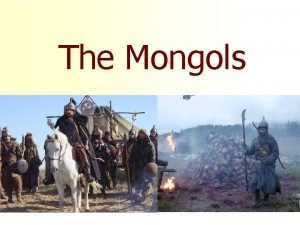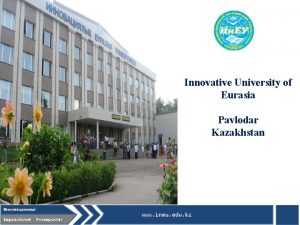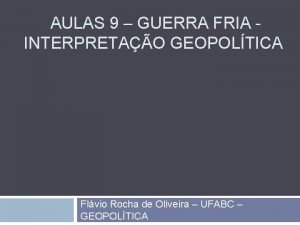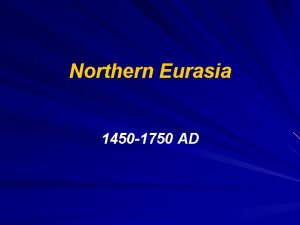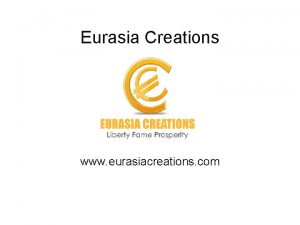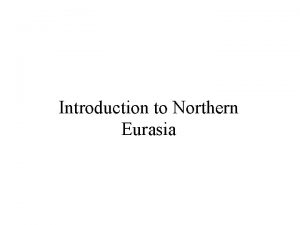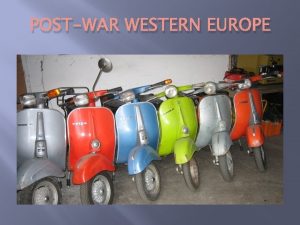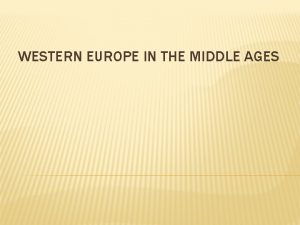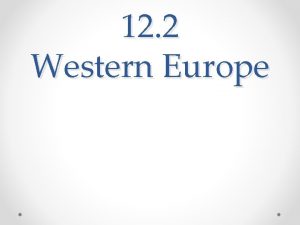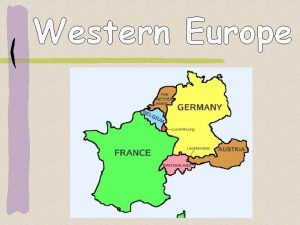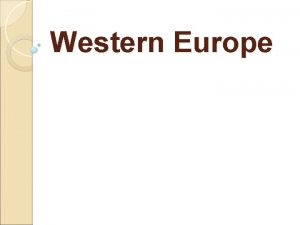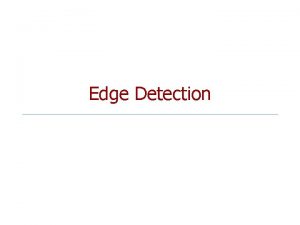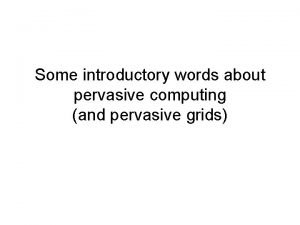Europe Geography Western edge of Eurasia Pervasive world





















- Slides: 21

Europe

Geography • Western edge of Eurasia • Pervasive world influence • Industrialized • Numerous nation-states • Urbanized population • High standards of living • Developed countries

Geography • Centrally located • Every part of Europe is within 300 miles of Seas. • Navigable waterways • Moderate distances • Resources like iron and coal

Geography • Alpine Areas The Alps, Pyrenees Dolomites, Carpathians • Peninsulas Scandinavia, Italian Iberian, Balkan • North European Plain

Europe’s Islands • Iceland • an island south of the Arctic circle in the North Atlantic Ocean • Volcanoes, hot springs and geysers

Europe’s Islands • The British Isles Ireland Great Britain • Primarily cool, rainy and hilly

Europe’s Islands • Mediterranean • 5 Large Islands • Volcanoes Sicily, Corsica, Sardinia, Cyprus, and Crete Volcanoes • Greece’s 2, 000 in the Aegean Sea • Rugged landscapes • Sunny climates

Europe’s Climate • Marine West Coast – dominates Western Europe • Humid Continental – dominates Eastern Europe with pockets of steppe and highland • Mediterranean climate – found along the southern part of Europe along the Mediterranean coastline

Biomes / Land Use Biomes Land Use • Most of Europe is Temperate mixed forest • Scandinavia has coniferous forests • Mediterranean has the scrubby vegetation known as chaparral • Typically mixed farming or dairy farming • Mediterranean farming includes wine and olive oil production • Highlands are used for grazing (beef and milk products come out of these areas – swiss cheese)

History of Europe • Ancient Greece & Rome( 8 th century BCE – 4 th century) • Dark Ages (4 th – 10 th century) • Middle Ages (10 th – 14 th century) • Renaissance (15 th – 16 th century) • Enlightenment (18 th century) • Age of Conquests (15 th – 20 th century)

Agricultural Revolution • Began in Europe in 1750’s • Based on Agricultural innovations • Increased food production • Sustained population increases • • Crop rotation Fertilizers Seed Drills Threshing machines

Industrial Revolution • Developed in the UK 1750 -1850 • Evolved from technical innovations that occurred in British Industry • Increased urbanization as a result

Europe’s Changing Population • • • Falling share of the world’s population All-time low fertility rates Fewer young people Smaller working age population Immigration partially offsetting losses

Urban Tradition • Urbanization – 73% of Europe is urbanized • Primate City – largest city that encompasses the cultural ideals • CBD – Downtown • Metropolis- describes the city and suburbs

th 20 Century Major Political Events • • • World War II and Holocaust Cold War Decrease in Imperialism Rise and Fall of Communism

Supranationalism • A venture involving three or more nations • Political, economic, and/or cultural cooperation to promote shared objectives

European Union (EU) • Original Members: (12) Belgium, Denmark, France, Germany, Greece, Ireland, Italy, Luxembourg, Netherlands, Portugal, Spain • Established: 1992 • Aimed to coordinate policy among members in three ways: 1. Economics 2. Defense 3. Justice and home affairs

Supranational Problems • Loss of autonomy and control • Differences in levels of economic development • Cultural barriers

Languages • Indo-European language family has over 50 different languages 100 dialects • Slavic Languages – Eastern Europe • Germanic Languagesnorthern Europe • Romance Languages – Southern Europe

Religions • Predominantly Christian • Most of southern & western Europe’s Christian are Roman Catholics • Most northern Europeans Christians are Protestants. • In much of southeastern Europe, Eastern Orthodox Christians predominate • Many Muslims & Jews also live Europe

Regions of Europe • • • Western Europe Eastern Europe British Isles Northern Europe Mediterranean Europe
 Rising edge and falling edge
Rising edge and falling edge Europe western uplands
Europe western uplands Who was the leader of the franks
Who was the leader of the franks Differences between western and eastern europe
Differences between western and eastern europe Chapter 14 the formation of western europe
Chapter 14 the formation of western europe Chapter 14 the formation of western europe
Chapter 14 the formation of western europe Population of western europe
Population of western europe Invaders attack western europe
Invaders attack western europe Feudalism
Feudalism Feudal hierarchy titles
Feudal hierarchy titles Western europe hdi
Western europe hdi Afro eurasia map
Afro eurasia map 1984 orwell map
1984 orwell map Capul tanjung piai
Capul tanjung piai 1984 chapter 6
1984 chapter 6 The mongol empire spans eurasia worksheet answer key
The mongol empire spans eurasia worksheet answer key Eurasia time zone
Eurasia time zone The mongol empire spans eurasia
The mongol empire spans eurasia The mongol empire spans eurasia answer key
The mongol empire spans eurasia answer key Innovative university of eurasia
Innovative university of eurasia Eurásia
Eurásia Eurásia
Eurásia
